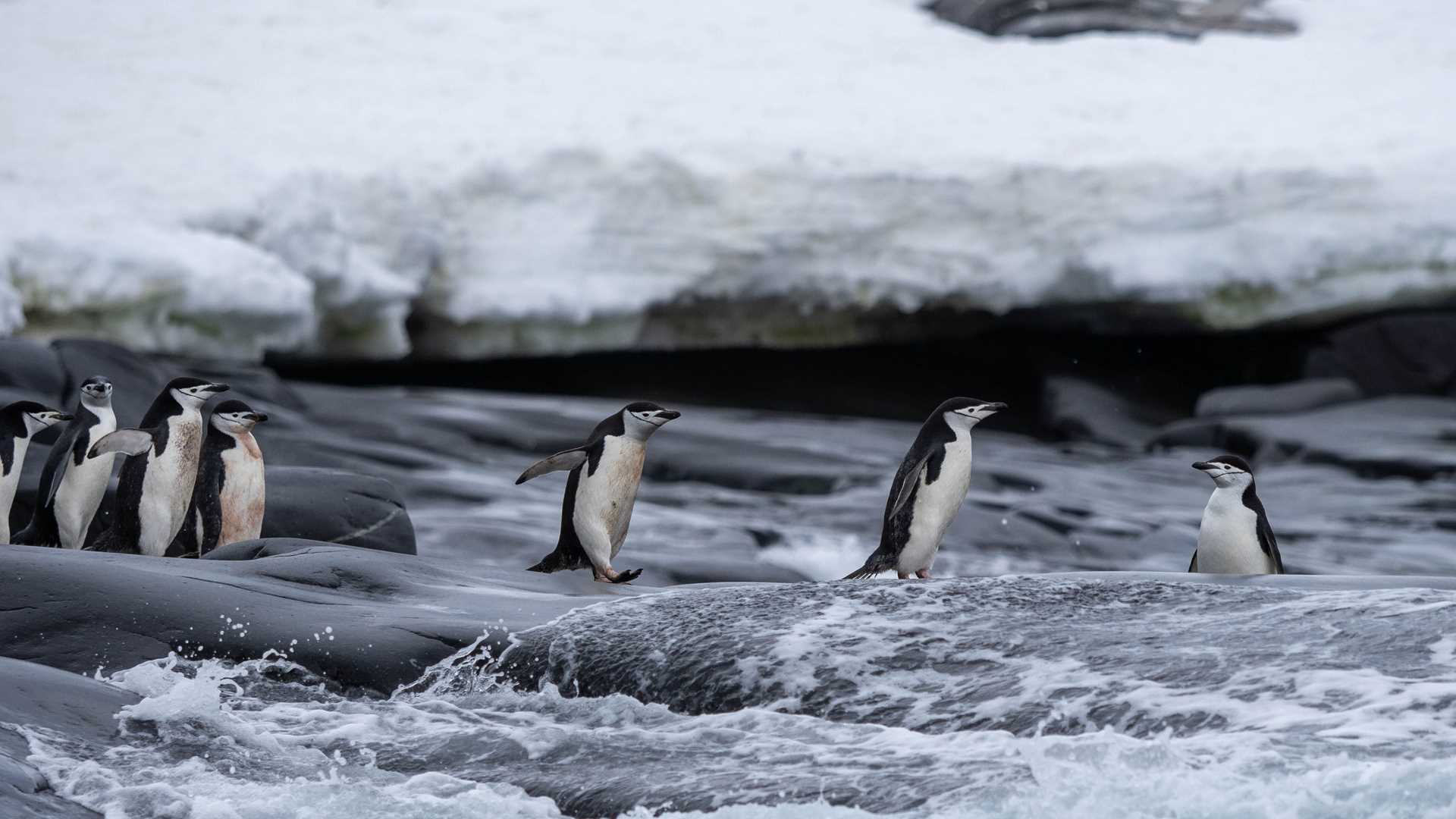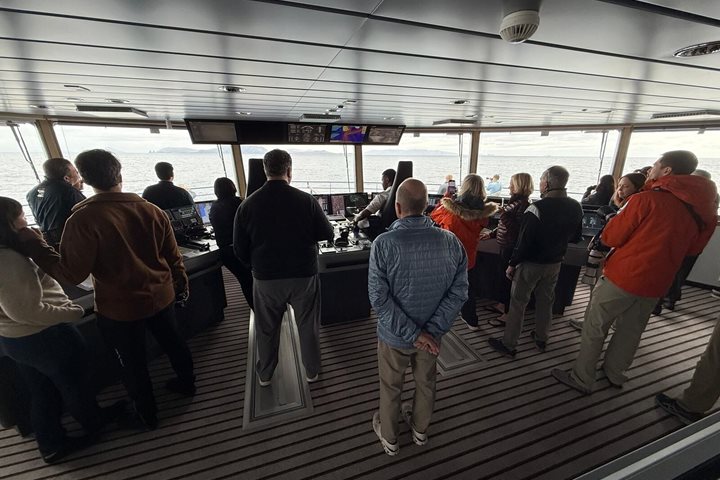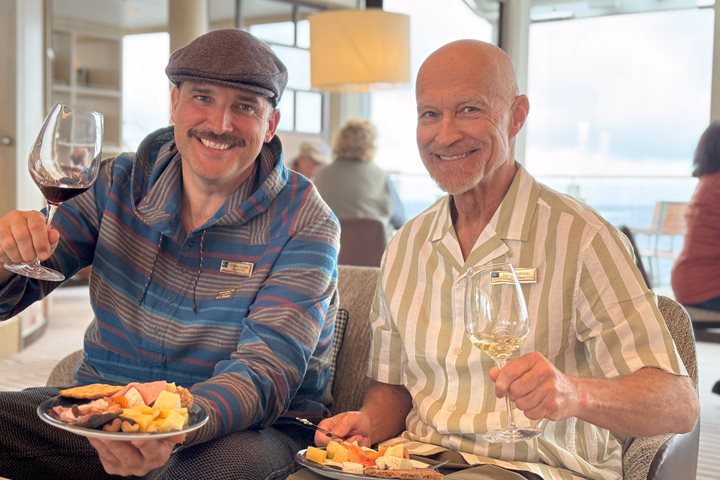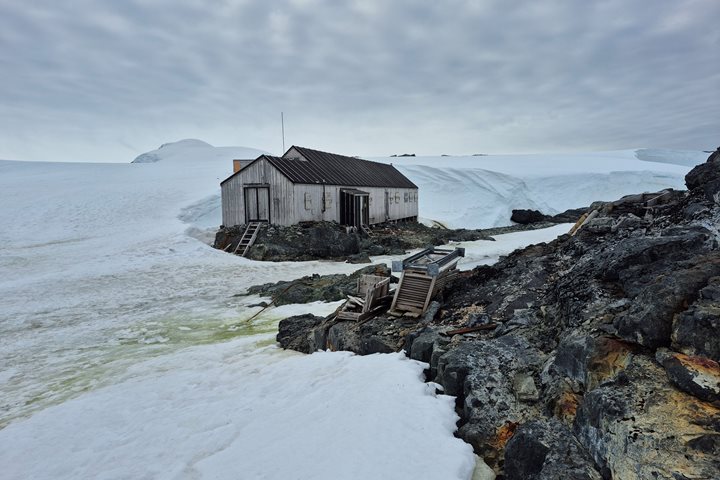Today aboard National Geographic Endurance, we cruised to our first destination of the day, Astrolabe Island, for a Zodiac cruise. The island is home to over 3,400 pairs of chinstrap penguins and hundreds of Antarctic shags. Everyone was excited to find that Adelie and gentoo penguins could also be spotted, along with Weddell and crabeater seals. An arched iceberg was seen in the distance, and Captain Aaron Wood maneuvered National Geographic Endurance so everyone could get a closer look at this stunning piece of ice. Fortunately, our exploration of Astrolabe Island was completed just in time, as the winds started to pick up, making for a spotty return to the ship. Unfortunately, the winds altered the afternoon plans, but thanks to the amazing initiative of Expedition Leader Andy Wolff, we were able to visit Whalers Bay. After walking around the historic whaling station, everyone made it back to the ship just in time for cocktail hour and recap, where our Global Explorers presented the undersea video they took using the remote operated vehicle (ROV). And last, but certainly not least, the ship celebrated three birthdays at dinner, including Naturalist/Photo Instructor Jim Pfitzer!
2/28/2025
Read
National Geographic Resolution
Northbound Drake Passage, Cape Horn, and the Beagle Channel
This morning, we had a later start than usual after a late night enjoying the crew show. Our galley team gifted us with a fulfilling brunch. We then had a brilliant forum about climate change with the participation of our panel of experts onboard. Afterward, our expedition leader called us to the bow to see Cape Horn, which was only a few miles ahead. The good weather allowed us to have a smooth and fast crossing, allowing extra time to swing by Cape Horn, the most southern tip of the Americas. Over the PA system, Steven provided a very interesting description of the historical importance of this area, then Pablo read a beautiful poem, a memorial to the seaman lost at sea. We could see the monument in the distance, two metal sheets that depict an albatross in flight. During the afternoon, we enjoyed Madalena’s presentation about Women in Antarctica. This was an incredible voyage through the struggles and delays of allowing women to participate in science and logistics in Antarctica. We entered the Beagle Channel around 17:00 and we encountered black-browed albatrosses, cormorants, dolphins, and whales. On our final approach to the beautiful city of Ushuaia, we passed by Les Eclaireurs Lighthouse and some of the seals that live in the Bridges Islands Archipelago.







